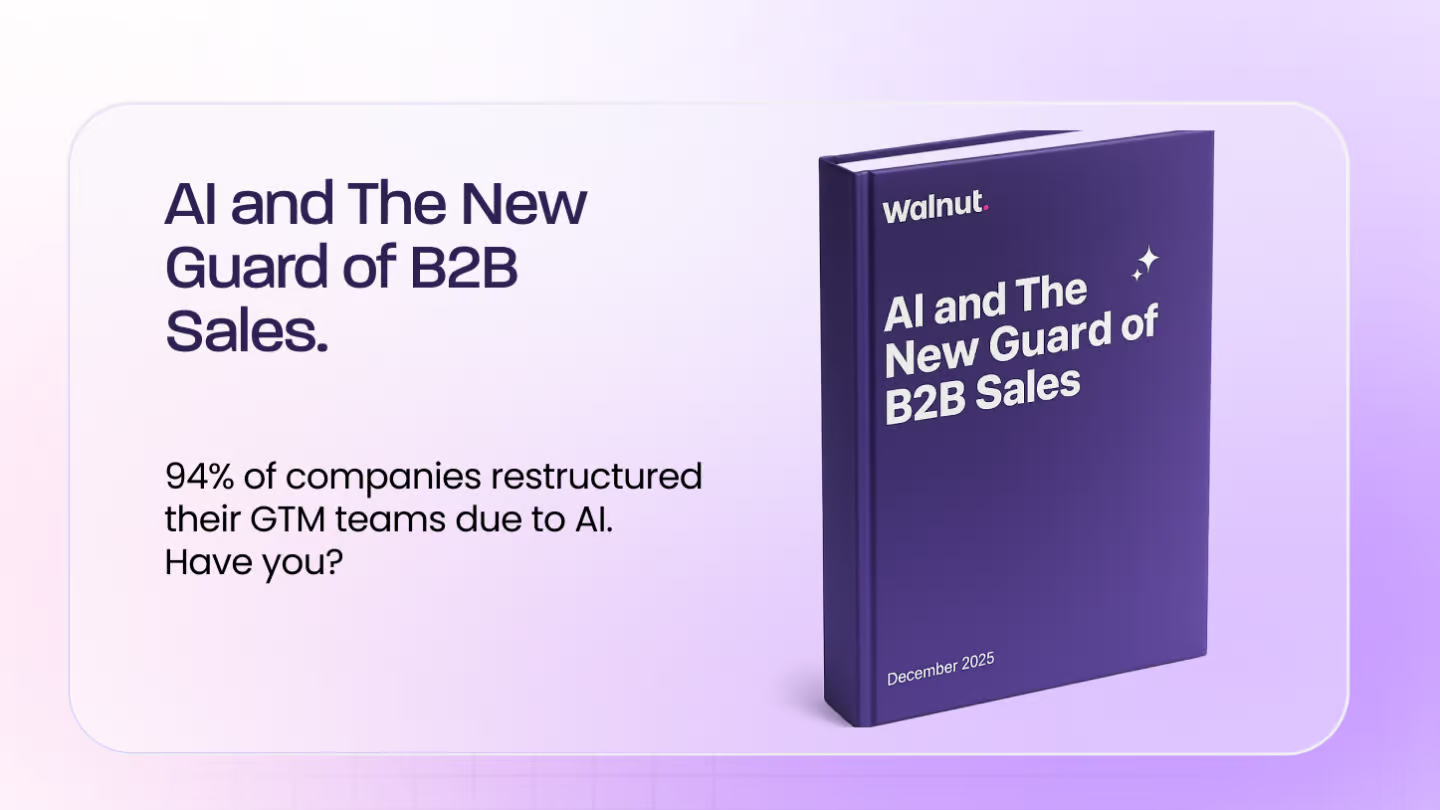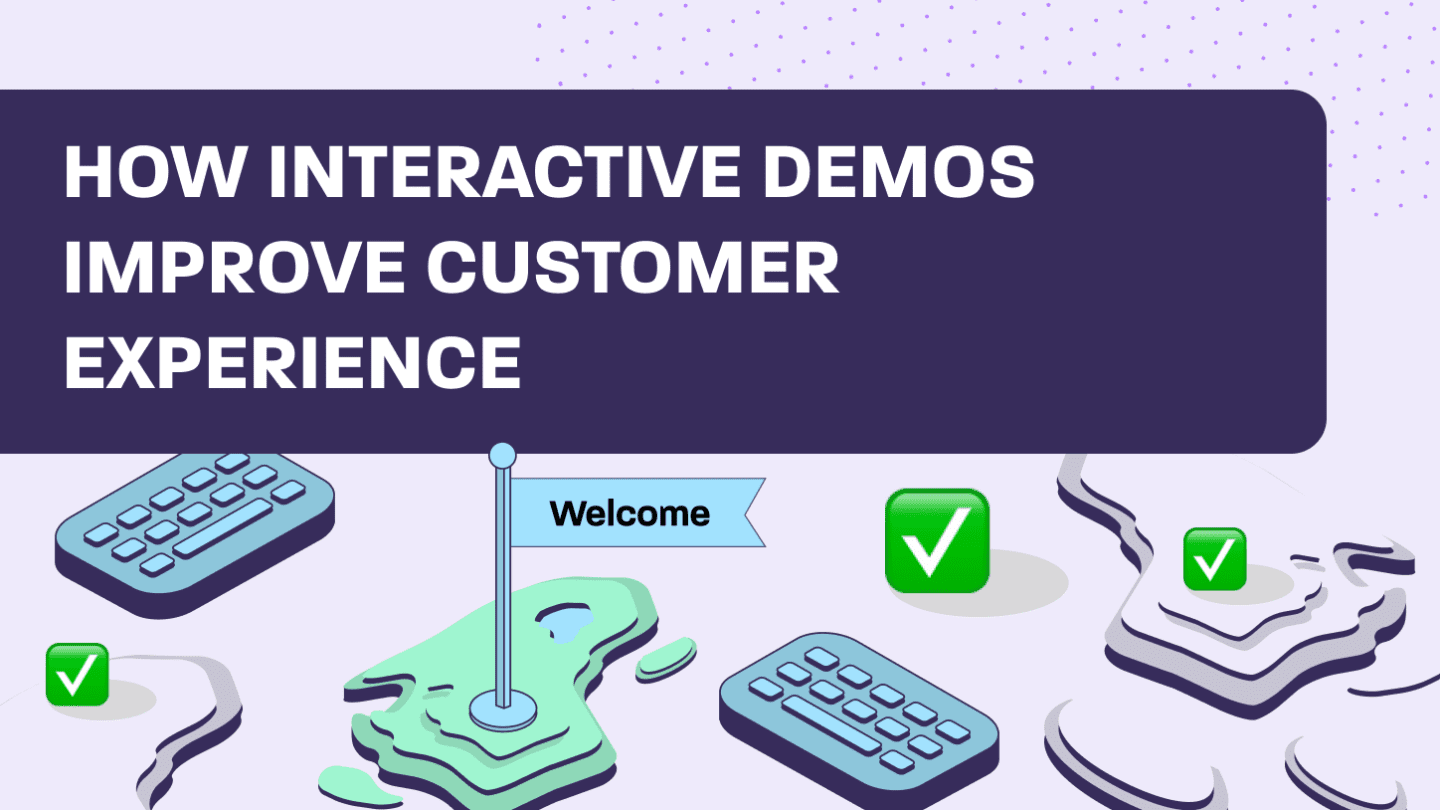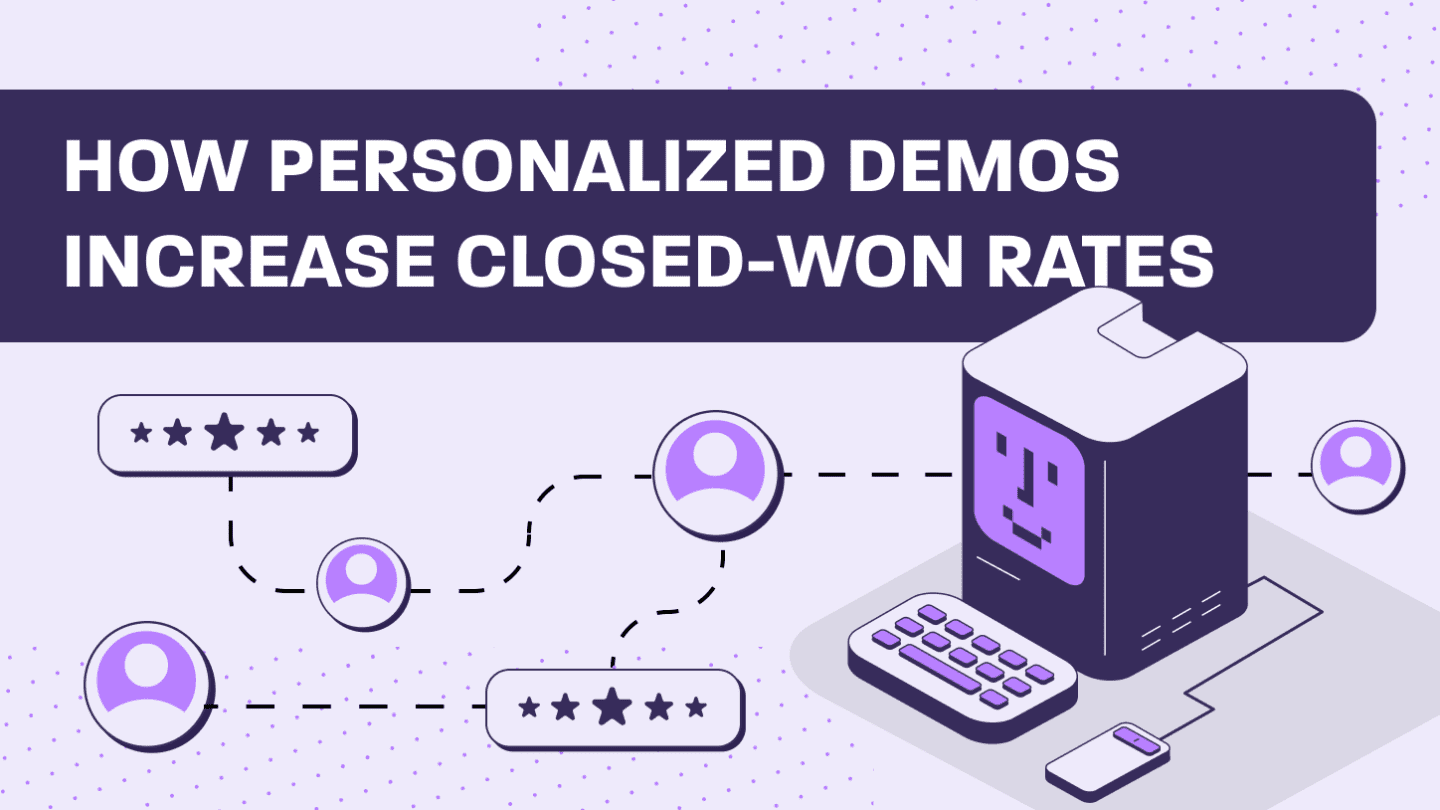Out with the old, in with the new.
Old school SaaS sales was focused only on helping reps close more deals, with buyers’ needs getting pushed to the side.
Not anymore.
Times are changing in the B2B SaaS landscape and now, customer-centric sales strategies are the names of the game. This means that making more sales in this environment is all about giving buyers everything they need to navigate the buying journey.
So, how exactly can you do this? Well, it turns out there’s a strategy to help you do precisely that.
In this article, we’ll break down everything you need to know about buyer enablement and how you can use it to strengthen your B2B SaaS sales approach.
What is buyer enablement?
Before we jump in, let’s quickly sum up what buyer enablement is.
In a nutshell, buyer enablement is the process of providing buyers with information and support to make the buying decision as easy as possible.
This approach isn’t focused on just closing deals. Instead, it’s about simplifying the buying process and giving buyers what they need to understand how your product can address their specific pain points.
Sales enablement vs. buyer enablement
So, what’s the key difference between buyer enablement and sales enablement?
Buyer enablement is about guiding buyers as they navigate the buying process. Reps can do this by offering a clear set of options, providing customers with data to help them make decisions, and demonstrating how a particular product will address the customer’s specific needs.
Meanwhile, sales enablement is centered around ensuring that your sales reps have all the resources, tools, and information they need to sell more effectively. When done right, sales enablement can help GTM teams reduce the length of sales cycles, increase win rates, and improve sales processes.
Buying B2B SaaS is hard work
We know we’ve said it before. But we’re going to keep saying it until things change.
The B2B SaaS buying process is way harder than it should be.
Still not entirely convinced? Well, we’ve got some cold, hard stats to back it up.
In a survey of 250 B2B customers, Gartner found that 77% described the buying experience as “very difficult or complex.”
We’re not saying that finding the right B2B SaaS solution is a simple task. But the fact is that there’s actually an excess of information that’s out there from multiple sources.
And in many cases, there’s more than one stakeholder rather than a single buyer making the decision to sign on the dotted line. This means that all of the decision makers need to consolidate different strands of information into a single “truth.”
The result? A continuous process of cross-checking facts and backtracking to revisit past decisions.
If you wanted visual proof for just how complicated this process is, here’s a handy flowchart that Gartner created that shows the average B2B buying journey.
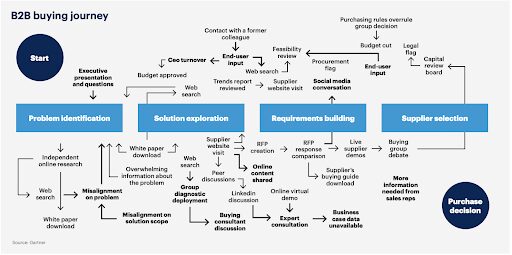
Are you immediately overwhelmed like us? It’s not a lack of information, but a surplus that makes the B2B SaaS buying journey difficult.
What’s the impact of buyer enablement on SaaS sales?
The people (B2B SaaS buyers) have spoken, and they want content and support that simplifies the buying process. And not information that makes it more complex!
And it’s in the sellers’ best interest to give buyers what they want.
This is exactly what Gartner argues, with researchers finding it’s three times more likely for customers to make a bigger purchase with less regret when a seller is able to provide useful information during the buying process.
By giving customers information and support throughout their buying journey, you can show that you understand their unique pain points. And that you can clearly connect the dots between their problems and how your solution will solve them.
Using a customer-centric selling approach helps buyers see you as a credible source and move through the sales cycle with confidence.
What does buyer enablement content look like?
As we mentioned before, successful buyer enablement comes down to providing customers with the information they need to make a purchasing decision.
And all the information and materials you provide buyers to convince them to make a purchase is called buyer enablement content.
This content can take many different forms, including:
- Product demos, PoCs, etc.
- Product brochures, whitepapers, etc.
- Elevator sales pitches or sales presentations
- Media, like videos, infographics, interactive charts & graphs, etc.
- Case studies and testimonials
Ideally, you should use a variety of different content types to thoroughly show your product’s value. Your content must also align with a buyer’s unique needs, inspire confidence, and clearly show why your product leaves the competition in the dust.
Regardless of what buyer enablement content you use, it should be:
- Relevant to the specific buyer and their challenges
- Quick, easy, and convenient to access and use
- Useful and applicable to the buying decisions buyers have to make
- Supported by credible data and facts
The 4 types of buyers (and how to approach them)
Wouldn’t it be nice if there was just a single prospect you had to convince to pull the trigger? Ahhhh, we can dream…
The reality is that the average B2B buying group typically consists of up to 10 stakeholders. This means you may run into different personalities and decision-making styles.
So, your buyer enablement strategy needs to be tailored to different types of buyers to give you a higher chance of getting a deal done.
Here’s just a few of the different buyer personas you may run into during the sales process:
The amiable buyer
The amiable buyer is the people-pleaser of the B2B buying world.
They are motivated by cooperation and stability, and often worry about how their decisions will affect everyone around them. Because of this, they may lack the assertiveness to really push the sale forward within their own camp.
So, when approaching this type of buyer, you’ll want to make them feel comfortable and provide information on how your product will make everyone’s lives easier without creating any disruptions.
The analytical buyer
There’s always the smart one.
This type of buyer responds to data, demonstrable capabilities, and repeatable results. For these types of buyers, it’s important that they have all the information to come to an informed decision.
Through your buyer enablement, you must clearly demonstrate your product’s value through competitive analysis, benchmark tests, high-fidelity demos that are made using interactive product demo software (cough, cough like Walnut) , and insightful data and analytics.
You’ll want to make sure that during the buying process, you don’t pressure this type of buyer because they need time to consider all the facts.
The driver
The driver is a buyer that, well, likes to be in the driver’s seat throughout the sales and negotiating process. They want, above all else, to be respected.
So, you’ll want to make them feel empowered every step of the way and like they have control.
Because they typically have a lot of decision-making power and the influence to make or break a deal, it’s also a good idea to approach each interaction with this buyer with a clear goal as well as evidence-based value propositions.
The expressive buyer
For the expressive buyer, it’s all about recognition and approval.
This type of buyer wants more than anything else to be needed and feel like they are your number 1 client.
So, what’s the way to their hearts? Try to develop a personal relationship, and then use testimonials and anecdotes to show how your product will address their specific needs.
How to implement buyer enablement in your SaaS sales strategy
Hopefully, you’re sold on the idea of empowering your buyers by giving them everything they need during the buying process.
Now, you might be wondering where to begin when it comes to implementing buyer enablement in your SaaS sales strategy?
Well, here are a few tips to get you started:
Put your buyer first
First and foremost, buyer enablement requires putting your buyer’s needs first and viewing the sales process from their perspective. It’s not about telling your buyer what you want them to hear, but what they need to hear.
Pro tips:
- Make sure that all your go-to-market strategies are focused on how to meet or exceed your customer’s expectations.
- Ask yourself, “If I was in the buyer’s shoes, what information would I need at this point to move forward?” This will help you understand the buyer’s point of view ahead of interactions or content delivery.
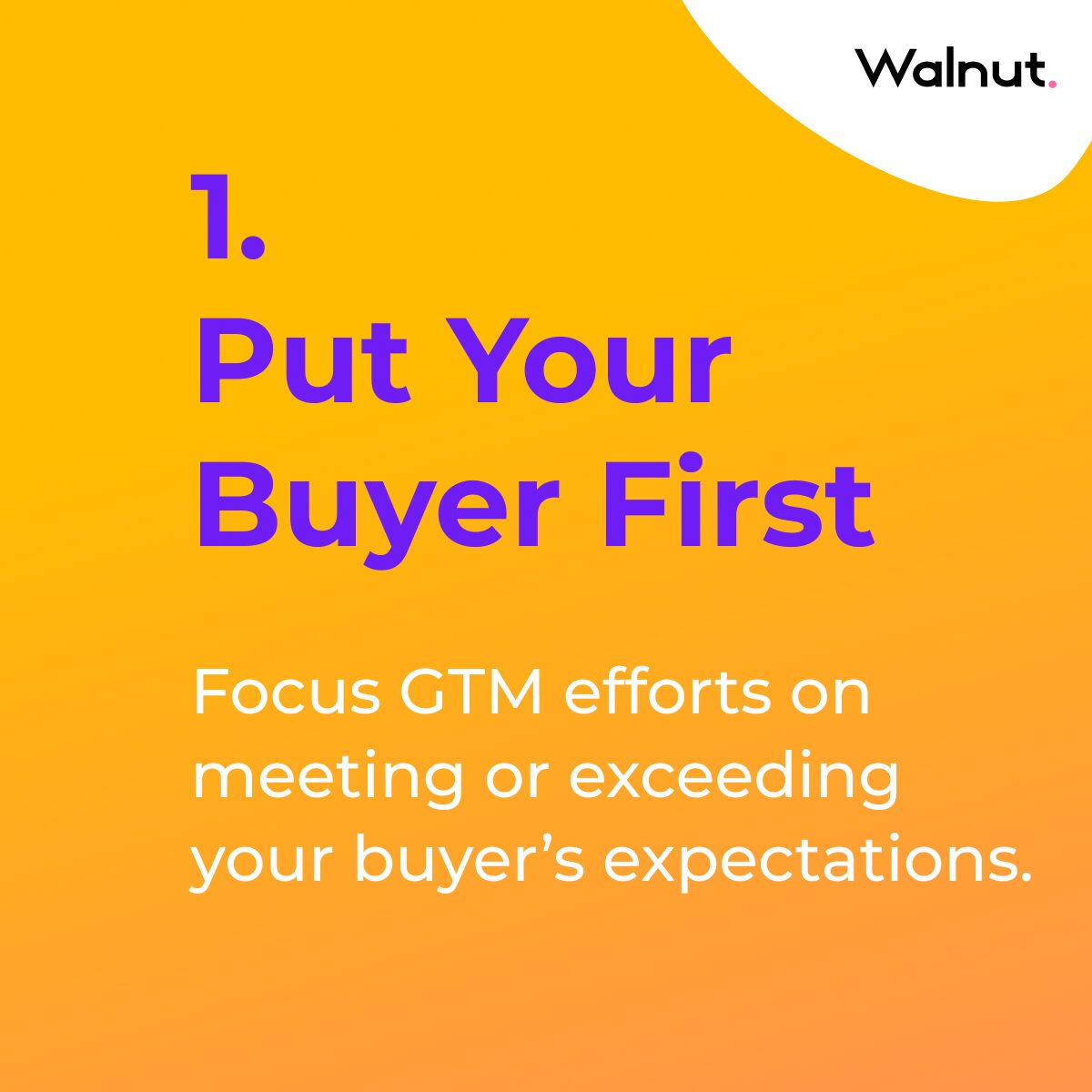
Personalize the experience
It’s tempting to try and impress your prospect with all your product’s features and capabilities. But this can be a major turn off for buyers.
Your buyer enablement content will be the most effective when it’s tailored to each specific buyer.
Pro tips:
- Start each new sales cycle with research and discovery. Learn what makes your clients tick, what their most critical challenges are, and how your solution will offer them value.
- Tailor your demo to the prospect’s needs, with their logo, name, etc.
- The best way to understand your buyer is to talk to them. Ask open-ended questions and try to empathize with them.
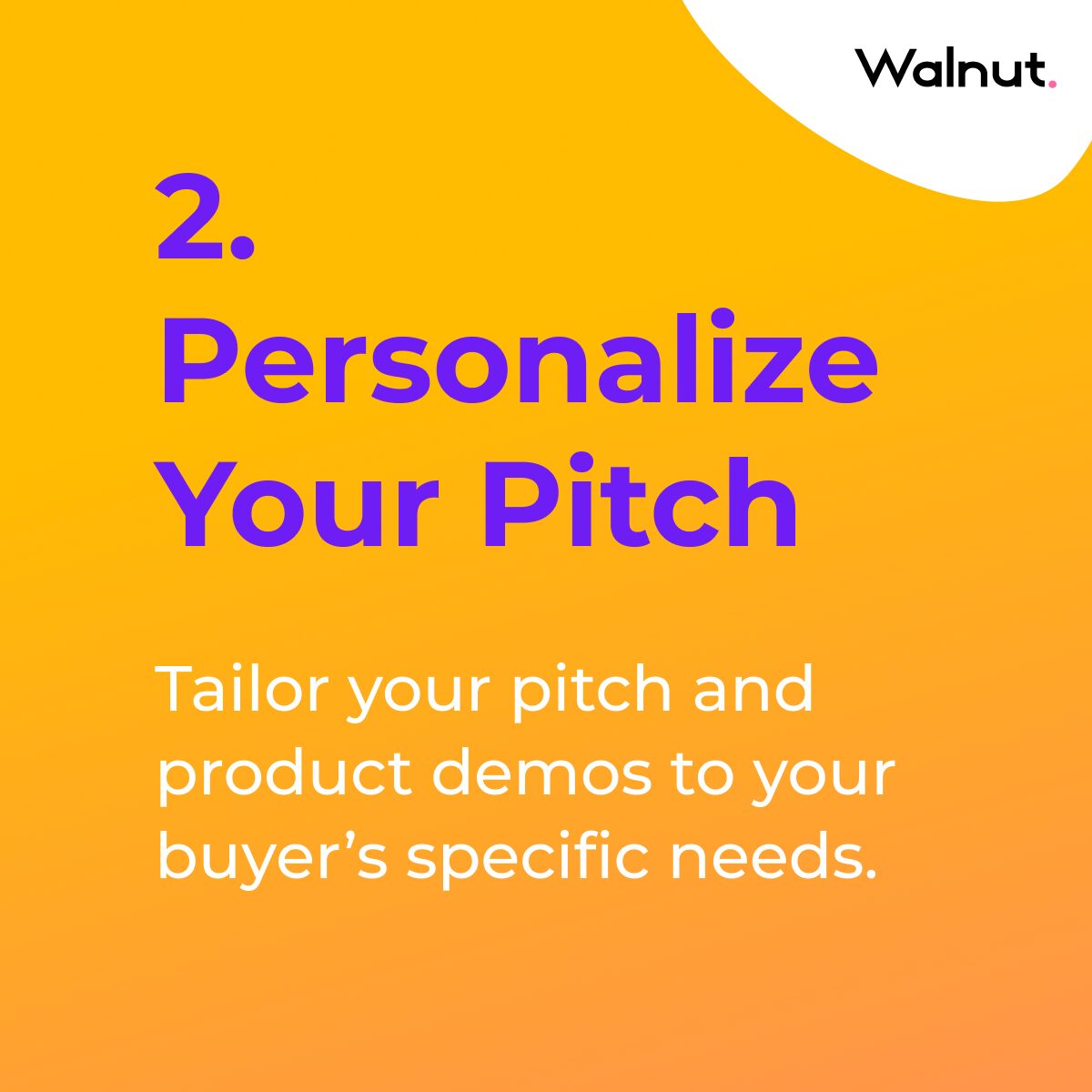
Meet your buyers halfway
We get it. A formulated approach can streamline your sales process and help you maintain a certain standard.
But sticking to it too rigidly can cost you sales for no good reason.
It’s essential to remember that not all buyers operate the same way. And, just like you have a sales pipeline, they might have a conflicting buying process.
Pro tips:
- One way to meet buyers in the middle is to be ready to offer a product demo at any time, whether it’s during sales outreach or right before closing.
- Try to find and eliminate any points of friction within your sales process. This can be anything from multiple handovers to unnecessary bureaucracy.
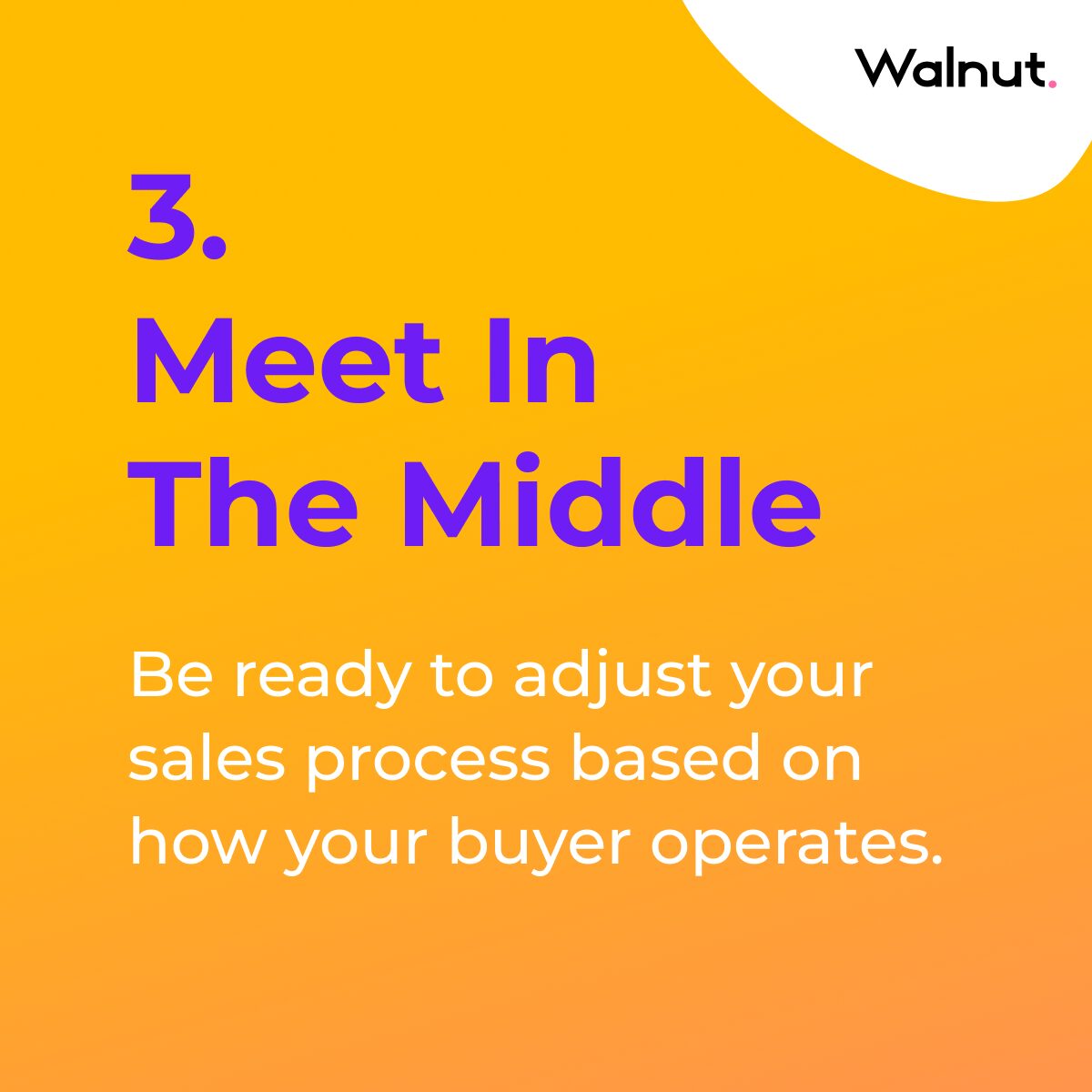
Make sure your message is consistent
Buyer enablement is about simplifying the decision-making process. However, nothing complicates it like providing conflicting or unaligned information.
You need to ensure that what you’re communicating is consistent across teams and at every stage of the sales process.
Pro tips:
- Identify the different teams that play a role during sales and where there might be a communication gap—for example, marketing, sales, solutions engineers, etc. shouldn’t be contradicting each other. A great way to do this is to use a sales demo platform like Walnut, which lets you create interactive demos you can use in your outreach, your live demos, and as a leave-behind.
- Make every sale a multi-team effort. Marketing should understand the buying process and what content buyers need to make decisions, while the sales team should communicate information buyers need clearly to all stakeholders.
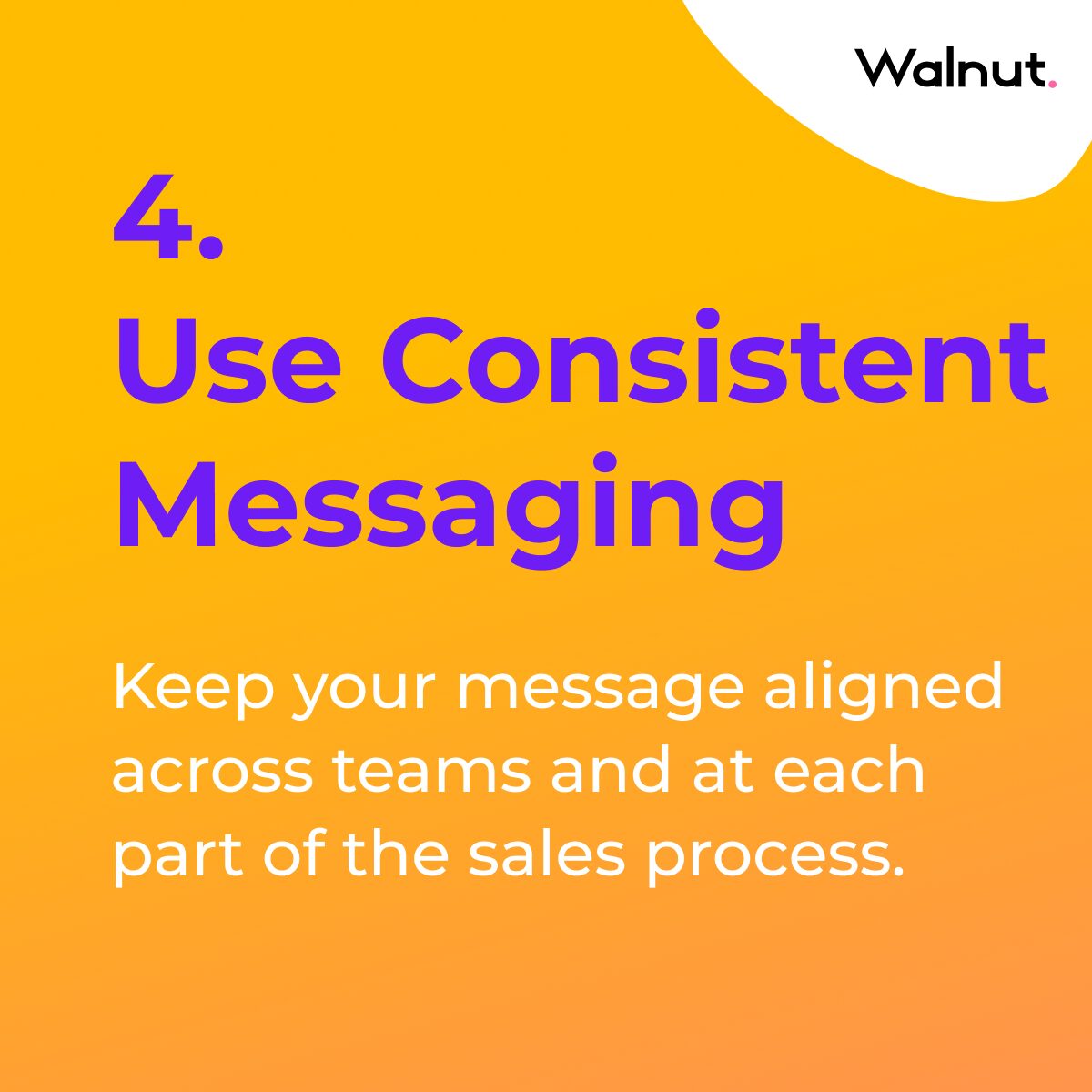
Leverage as much buyer enablement content as possible
Content is king! And we aren’t just saying that because we’re the content writers.
Recognize that there are many types of buyer enablement content and that each can be leveraged to play a unique role in the sales process. Different content can be more effective in combination, at different stages, or for different buyer types.
Pro tips:
- Identify buyer personas and provide them with content that they will find the most persuasive. Take analytical buyers, for example. Performance benchmarks, case studies, and data are all types of content that will speak to their personalities.
- Optimize content to tell compelling sales stories. For example, a guided interactive demo may be more effective than a video presentation to highlight a specific pain point or use case.
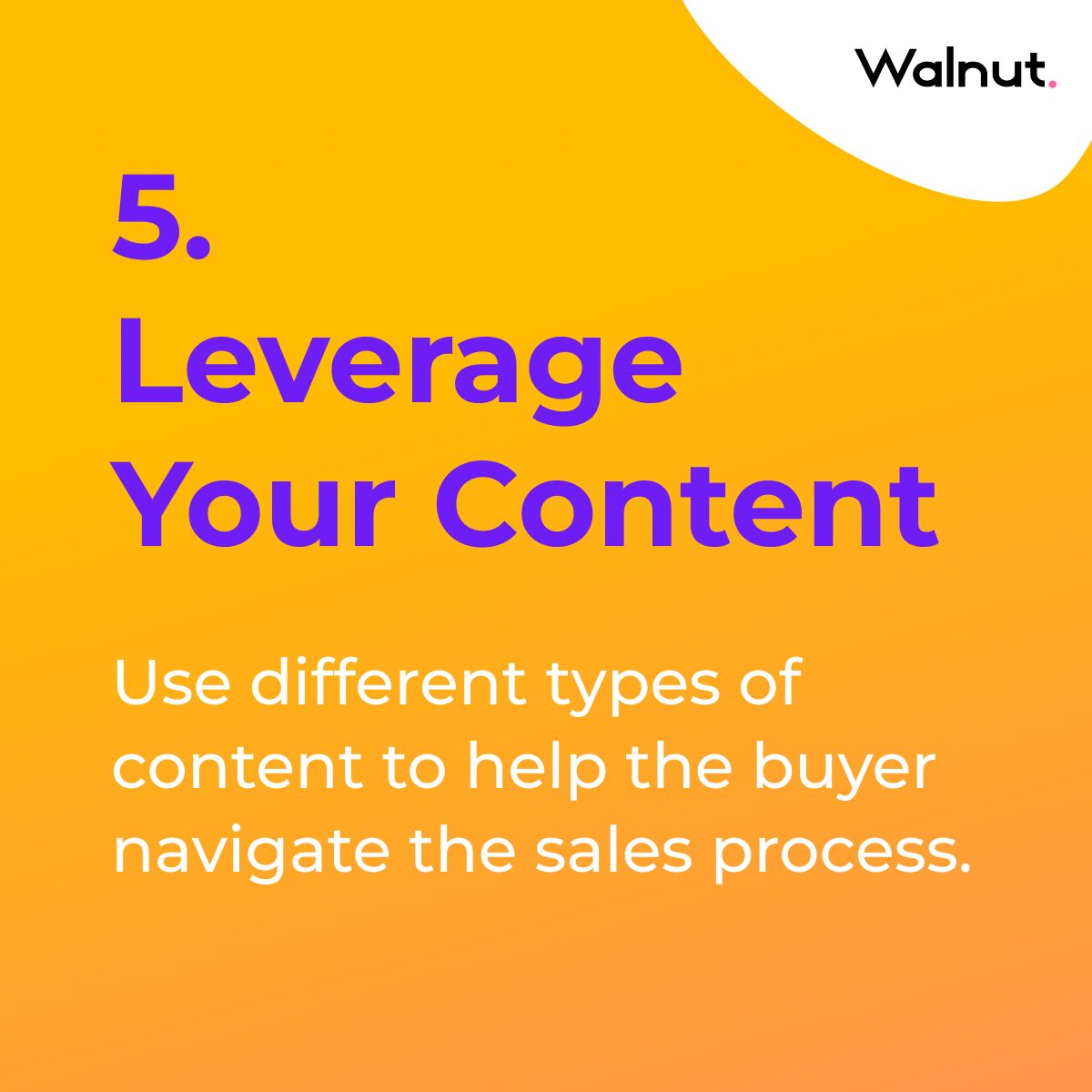
Using product demos to enhance buyer enablement
Seeing is believing. And what better way to help buyers see why they should decide to purchase your product than by letting them experience it for themselves?
Seriously, we can’t think of anything.
Demo experience platforms like Walnut empower B2B sales teams to create engaging and realistic buyer enablement assets such as interactive product demos.
By letting the product do the talking, buyers can better understand how your product can solve their specific problems, which can help them move through and complete the buying process with more ease.
Demo experience platforms like Walnut even offer detailed analytics so your sales team can discover actionable insights about how to better sell to different types of buyers.
With strong buyer enablement, GTM teams can give buyers all the information they need to navigate the buying journey and reach the destination: a B2B SaaS deal.
So, if you want to use buyer enablement to strengthen your SaaS sales strategy, click that “Get Started” button on the top of the screen.

